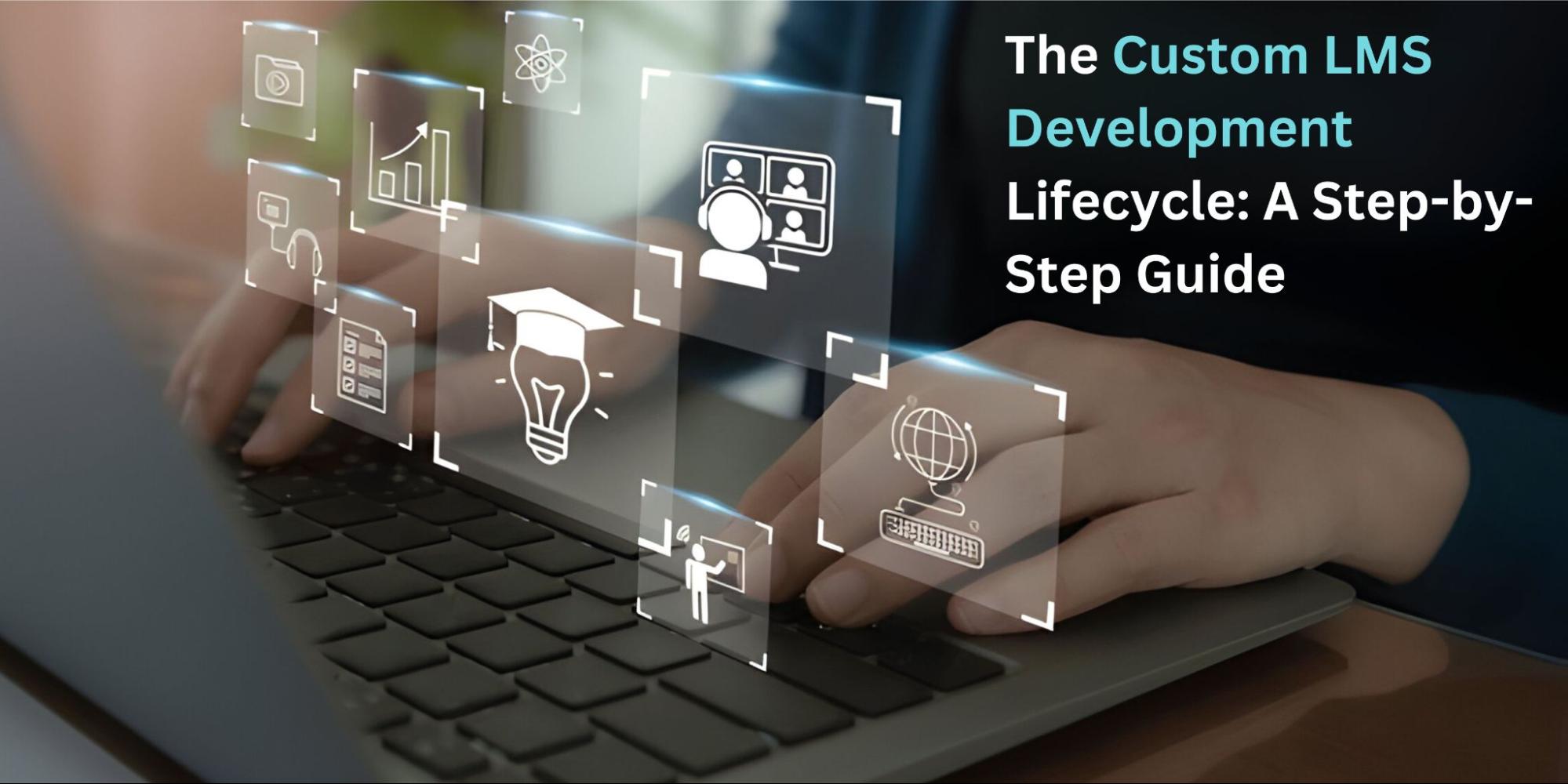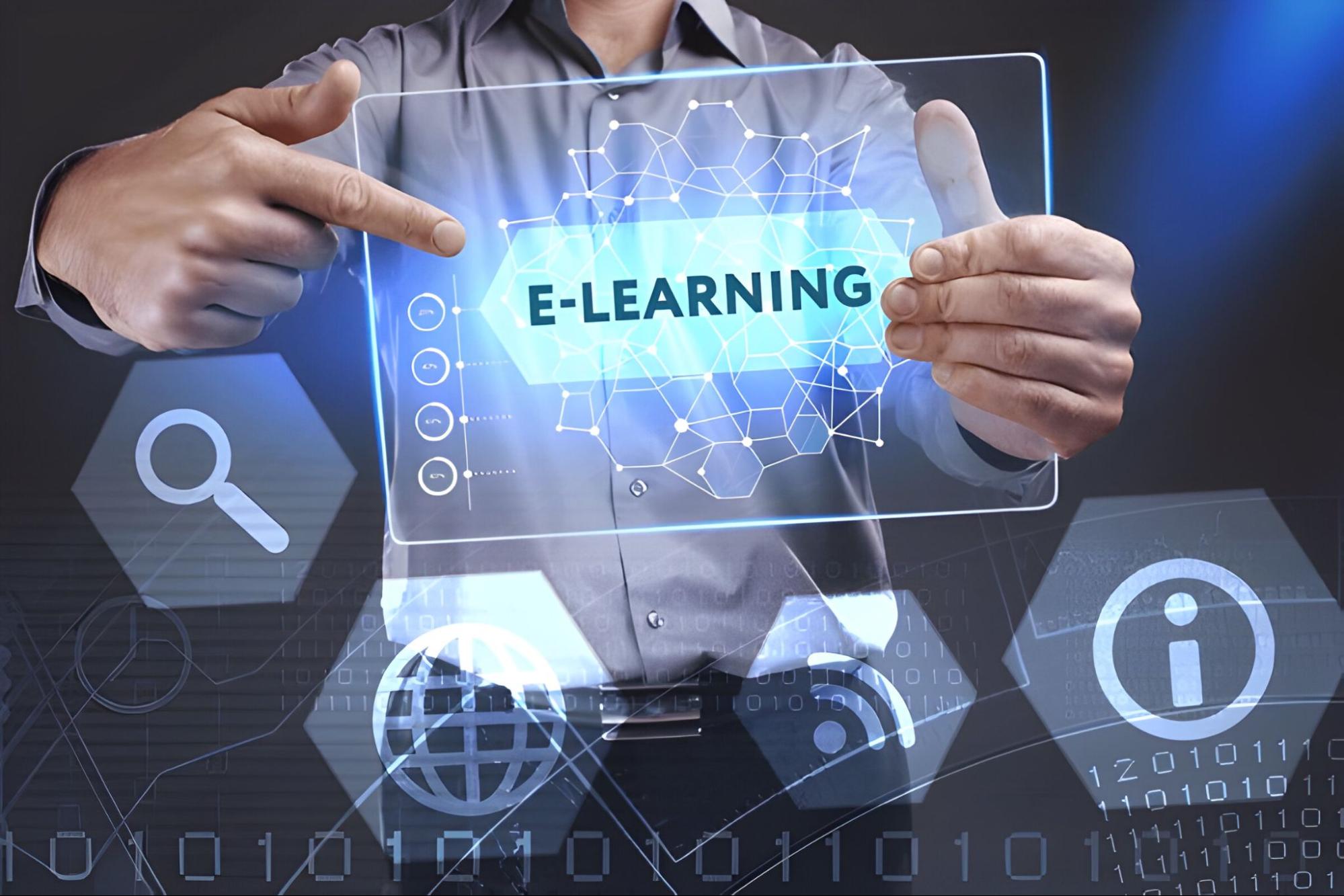Blog Software Development
The Custom LMS Development Lifecycle: A Step-by-Step Guide

Understanding the Importance of a Custom LMS for Your Organization
A Learning Management System (LMS) is a crucial tool for any organization looking to effectively deliver and manage training programs. While off-the-shelf LMS solutions are readily available, a custom LMS can offer significant advantages tailored to your specific needs.
Why Consider a Custom LMS?
-
Tailored to Your Organization's Unique Requirements: A custom LMS can be designed to perfectly align with your company's culture, branding, and specific training objectives. This ensures that the platform is intuitive and engaging for your employees.
-
Enhanced User Experience: By building a custom LMS, you have complete control over the user interface and experience. This allows you to create a platform that is easy to navigate and visually appealing, leading to increased user satisfaction and engagement.
-
Seamless Integration: A custom LMS can be seamlessly integrated with your existing systems, such as HRIS, CRM, and performance management tools. This streamlines processes, reduces data entry, and provides a holistic view of employee performance.
-
Scalability: As your organization grows and evolves, a custom LMS can easily adapt to changing needs. You can add new features, modules, and functionalities without limitations.
-
Data-Driven Insights: A custom LMS can be designed to collect and analyze detailed data on learner performance, training effectiveness, and program completion rates. This information can be used to make data-driven decisions and optimize training programs.
-
Competitive Advantage: A custom LMS can give your organization a competitive edge by providing a unique and effective learning experience. This can lead to increased employee productivity, improved performance, and higher retention rates.
-
Long-Term Cost Savings: While the initial investment in a custom LMS may be higher, it can lead to significant cost savings in the long run. By eliminating the need for multiple software licenses and reducing administrative overhead, you can achieve a better return on investment.
Key Features of a Custom LMS
-
Content Management: Efficiently create, store, and manage various types of learning content (text, images, videos, assessments).
-
Learner Management: Track learner progress, assign courses, and monitor completion rates.
-
Reporting and Analytics: Generate detailed reports on learner performance, training effectiveness, and program ROI.
-
Communication Tools: Facilitate interaction between learners and instructors through forums, chat, and messaging.
-
Mobile Accessibility: Ensure learning can be accessed on various devices for flexibility.
-
Gamification: Incorporate game-like elements to increase engagement and motivation.
Designing the Perfect Custom LMS: User Experience, Branding, and Functionality
Designing the Perfect Custom LMS requires a strategic focus on three key elements: User Experience (UX), Branding, and Functionality.
-
User Experience (UX): The success of a Custom LMS Software largely depends on its ease of use. A well-designed UX ensures that learners can easily navigate the platform, access content, and complete tasks without frustration. This involves creating intuitive interfaces, simplifying the course enrollment process, and ensuring the LMS is mobile-friendly. Personalization is also crucial—allowing users to customize their learning paths, receive recommendations, and track their progress enhances engagement and satisfaction.
-
Branding: Consistent branding within your LMS reinforces your organization's identity and culture. This means incorporating your logo, color schemes, and brand messaging throughout the platform. A branded LMS not only strengthens your brand’s presence but also fosters a sense of belonging and pride among users. This cohesive branding can also extend to the tone and style of the content, aligning it with your organization's values and communication style.
-
Functionality: The core of a custom LMS lies in its functionality. It must be capable of supporting a wide range of learning activities, from traditional coursework to interactive modules, quizzes, and assessments. Additionally, integrating with other tools such as CRM systems, HR platforms, and communication tools enhances the LMS’s effectiveness. Features like gamification, certification, and social learning components can further enrich the learning experience, making it more engaging and motivating.
By prioritizing UX, branding, and functionality, you can create a custom LMS that not only meets the specific needs of your organization but also delivers a seamless, branded, and effective learning experience for all users
Building the Custom LMS: Development Methodologies and Technology Choices

When building a custom Learning Management System (LMS), the development methodologies and technology choices you make can significantly impact the final product's success. To create an effective and efficient LMS, it's crucial to carefully consider the various options available and select the ones that best fit your organization's needs.
One of the key factors to consider is the development lifecycle. Agile methodologies, such as Scrum or Kanban, have proven to be highly effective in LMS development, as they allow for iterative and incremental delivery, ensuring that the system evolves to meet changing requirements. These approaches foster collaboration, adaptability, and rapid feedback, which are essential in the dynamic world of learning and development.
In terms of technology choices, the LMS development prospect offers a wide range of options, especially when considering the Best LMS for Non-Profit Organizations. Leveraging modern web frameworks, such as React, Angular, or Vue.js, can provide a robust and scalable foundation for your LMS. These frameworks not only enable the creation of dynamic and responsive user interfaces but also facilitate the integration of advanced features like gamification, social learning, and analytics.
Additionally, the selection of the right database technology, whether it's a relational database like MySQL or PostgreSQL, or a NoSQL solution like MongoDB or Couchbase, can greatly impact the LMS's performance, scalability, and data management capabilities.
By carefully considering the development methodologies and technology choices, you can build a custom LMS that not only meets your organization's specific needs but also positions it for long-term success in the ever-evolving world of learning and development.
Integrating and Deploying the Custom LMS: Ensuring a Seamless Implementation
To ensure a seamless implementation of a custom LMS (Learning Management System), follow these key steps for integrating and deploying the system:
1. Pre-Implementation Planning
-
Needs Assessment: Work with stakeholders to define the LMS requirements, including desired features and functionalities.
-
Project Plan: Develop a detailed project plan that includes timelines, milestones, and resource allocation.
2. System Integration
-
Compatibility Check: Ensure the LMS integrates smoothly with existing systems such as HR, CRM, or ERP platforms.
-
APIs and Data Integration: Use APIs or other integration tools to connect the LMS with other software and migrate data.
3. Customization and Development
-
Tailor the LMS: Customize the LMS to meet your organization's specific needs, including branding, course structures, and user roles.
-
Feature Development: Implement any additional features required by your organization.
4. Testing and Validation
-
Quality Assurance: Perform thorough testing to identify and fix any issues before full deployment.
-
User Acceptance Testing (UAT): Involve end-users in testing to ensure the system meets their needs and expectations.
5. Training and Documentation
-
User Training: Conduct training sessions for administrators and users to ensure they are comfortable with the LMS.
-
Documentation: Provide comprehensive user manuals and support documentation to assist with the transition.
6. Deployment
-
Phased Rollout: Consider a phased approach to gradually introduce the LMS to users and manage potential issues.
-
Go Live: Launch the LMS and ensure all systems are operational and users have access.
7. Post-Implementation Support
-
Monitoring: Track the LMS performance and user feedback to address any issues promptly.
-
Ongoing Support: Provide continuous support and maintenance to resolve any post-deployment issues and ensure the system remains effective.
8. Evaluation and Optimization
-
Review and Improve: Regularly review the LMS performance and user satisfaction to make necessary improvements.
-
Update and Upgrade: Keep the LMS updated with the latest features and security patches to ensure long-term effectiveness.
By meticulously planning and executing each of these steps, you can achieve a successful integration and deployment of your custom LMS, leading to a more effective and streamlined learning experience.
Maintaining and Enhancing the Custom LMS: Ongoing Support and Optimization
Maintaining and enhancing a custom LMS (Learning Management System) is crucial for ensuring its continued effectiveness and alignment with evolving needs. Here’s a guide to help you manage ongoing support and optimization:
1. Regular Maintenance
-
System Updates: Regularly apply updates and patches to the LMS to address security vulnerabilities, fix bugs, and improve performance.
-
Backup and Recovery: Implement a routine backup process to protect data and ensure recovery options are in place in case of system failures.
2. User Support
-
Help Desk: Provide a dedicated help desk or support team to assist users with any issues or questions they may have.
-
Training: Offer ongoing training sessions or resources to help users stay updated on new features and best practices.
3. Performance Monitoring
-
System Analytics: Use built-in analytics or third-party tools to monitor system performance, user engagement, and course completion rates.
-
Feedback Collection: Regularly collect feedback from users to identify areas for improvement and address any concerns.
4. Enhancements and Upgrades
-
Feature Updates: Periodically review and enhance the LMS by adding new features or improving existing ones based on user feedback and technological advancements.
-
Integration Improvements: Ensure the LMS remains compatible with other systems and integrate additional tools or software as needed.
5. Security Management
-
Access Controls: Regularly review and update user permissions and access controls to maintain data security and comply with organizational policies.
-
Security Audits: Conduct periodic security audits to identify and mitigate potential risks.
6. Customization and Adaptation
-
User Experience: Continuously assess and improve the user interface and experience to ensure the LMS remains intuitive and user-friendly.
-
Scalability: Adapt the LMS to accommodate growing user bases or expanding training programs.
7. Documentation and Communication
-
Updated Documentation: Keep user manuals, help guides, and FAQs up-to-date with the latest changes and enhancements.
-
Regular Communication: Maintain clear communication with users regarding updates, new features, and system changes.
8. Review and Evaluation
-
Periodic Reviews: Conduct regular reviews of the LMS performance and its alignment with organizational goals and user needs.
-
Continuous Improvement: Implement a continuous improvement process to refine and optimize the LMS based on performance data and feedback.
By focusing on these areas, you can ensure that your custom LMS remains effective, secure, and responsive to the needs of your organization and its users.
Conclusion: Embrace the Future of Learning with a Custom LMS
In an era where personalized learning and continuous development are paramount, a custom LMS emerges as a powerful tool for organizations to shape their workforce and drive success. By tailoring the learning experience to specific needs, businesses can enhance employee engagement, boost productivity, and foster a culture of innovation.
While the journey of integration and deployment may present challenges, the rewards are substantial. With careful planning, strategic execution, and a focus on user experience, organizations can unlock the full potential of their custom LMS.
By embracing the flexibility and scalability of a custom LMS, businesses position themselves at the forefront of E-Learning Software Solutions, empowering their employees to reach new heights.



